

William Stopford
BYD Shark 6 gets higher payload thanks to GVM upgrade
3 Hours Ago
The e-tron Sportback looks and feels like a typical Audi SUV, which is a bit surprising for the brand's first all-electric vehicle.
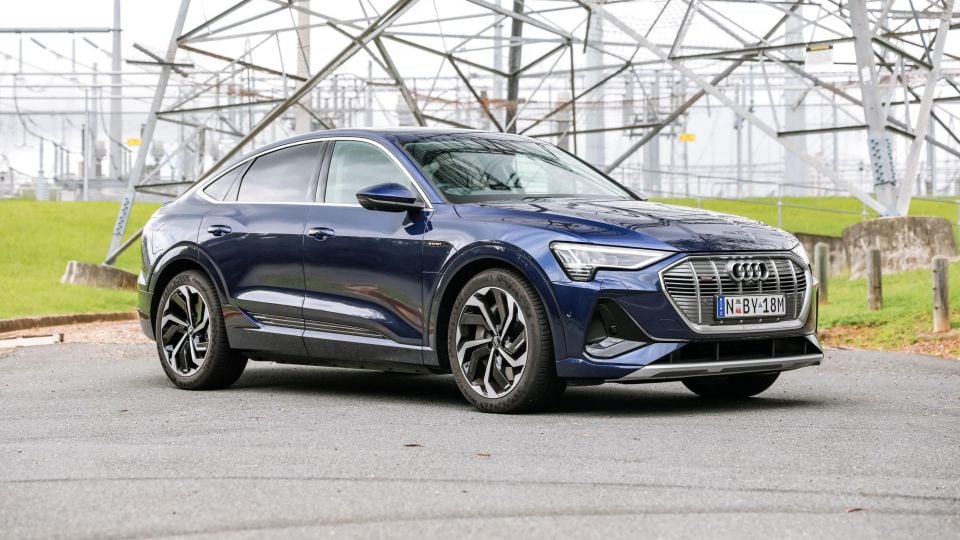


News Editor

News Editor


News Editor

News Editor
Quickly see how this car stacks up against its competition. Select any benchmark to see more details.
Where expert car reviews meet expert car buying – CarExpert gives you trusted advice, personalised service and real savings on your next new car.
Forget about space age styling or enormous touchscreens.
With the Audi e-tron, the German marque appears to have set out to make an electric Audi and not an electric car. Consequently, there are few surprises inside and out or on the road.
Much as the upcoming all-electric BMW iX3 is based on the combustion-powered X3 and the Mercedes-Benz EQC on the GLC, the Audi e-tron uses an updated version of the MLB Evo platform underpinning the Audi Q5 and Q7.

While the iX3 looks like an X3 with a different grille and some blue exterior ornamentation, Audi went to the effort of designing an entirely new body for its first all-electric vehicle. You mightn’t realise that, though, as this follows the same design language as Audi’s other SUVs.
Nothing about it looks overtly electric, either, apart from the mostly closed-off grille. At least Audi’s designers have penned a coupe SUV shape that looks more resolved than, say, a BMW X6 or Mercedes-Benz GLE Coupe.
It appears Audi is betting on electric car buyers not necessarily wanting a car that screams electric. For loyal Audi owners who bristle at the thought of a Tesla Model X’s huge touchscreen and falcon doors, the e-tron will be reassuringly familiar. For those who wanted Audi to be a little more daring with its first EV, the e-tron may disappoint.
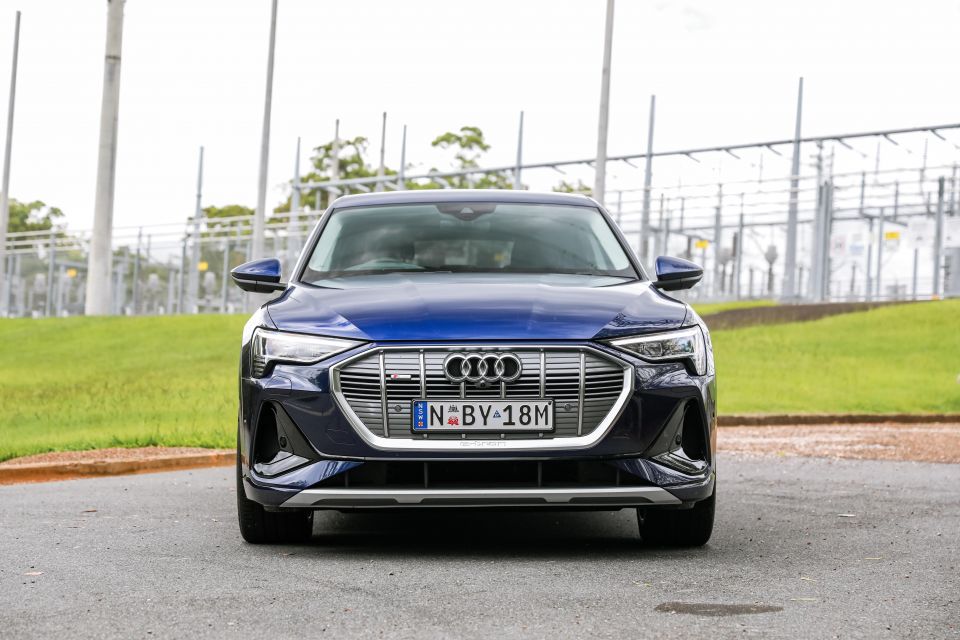
The 2021 Audi e-tron range comprises 50 and 55-badged models, following Audi’s new naming structure, in both wagon and Sportback bodies.
That makes our tester the most expensive e-tron for now, priced at $157,100 before on-road costs or around $10,000 above the equivalent 55 wagon.
While we wait for the BMW iX3, the Mercedes-Benz EQC is the e-tron’s most direct rival and costs $139,700 before on-road costs. However, Mercedes-Benz has used the EQC as a trial for the fixed-pricing model it’ll roll out across the range so there’s essentially no room for negotiation.
The slinky Jaguar I-Pace starts at a lower price: $128,248 list for the base S, with even the range-topping HSE undercutting the e-tron at $151,448 before on-roads.
If you simply want a large Audi SUV and don’t care what powers it, the Q7 is considerably cheaper. In 50 TDI or 55 TFSI guise, it’s priced at $121,300 before on-roads, though the spicier SQ7 is more expensive than the e-tron at $162,500 before on-roads.
Finally, the seven-seat Tesla Model X is currently priced at $149,990 before on-roads for the Long Range and $174,990 list for the Plaid.

Buy your new car without the stress. It's fast, simple and completely free.

Great service from Travis and team, second time I have used this business would not hesitate to recommend them to anyone
Craig C.
Purchased a Ford Ranger in Sunshine Coast, QLD
CarExpert helped Craig save $7,224 on his Ford Ranger, now let us save you on your next new car.
Get your BEST priceOther than a larger capacity battery, the e-tron 55’s feature list is the same as the cheaper 50. That includes standard adaptive air suspension and 21-inch alloy wheels, as well as the S line exterior package.
Inside, there are dual 10.1-inch and 8.6-inch touchscreens and a 12.3-inch Virtual Cockpit digital instrument cluster. The upper touchscreen displays Apple CarPlay and Android Auto, the former with wireless functionality, while there’s also factory satellite navigation and DAB+ radio. A wireless phone charger is located in the centre console, while a head-up display is ahead of the driver.
You sit on seats upholstered in Milano leather, which are heated and power-adjustable up front, while standard convenience features include keyless entry and start, tyre pressure monitoring, a power tailgate, surround-view camera along with automatic headlights and wipers.

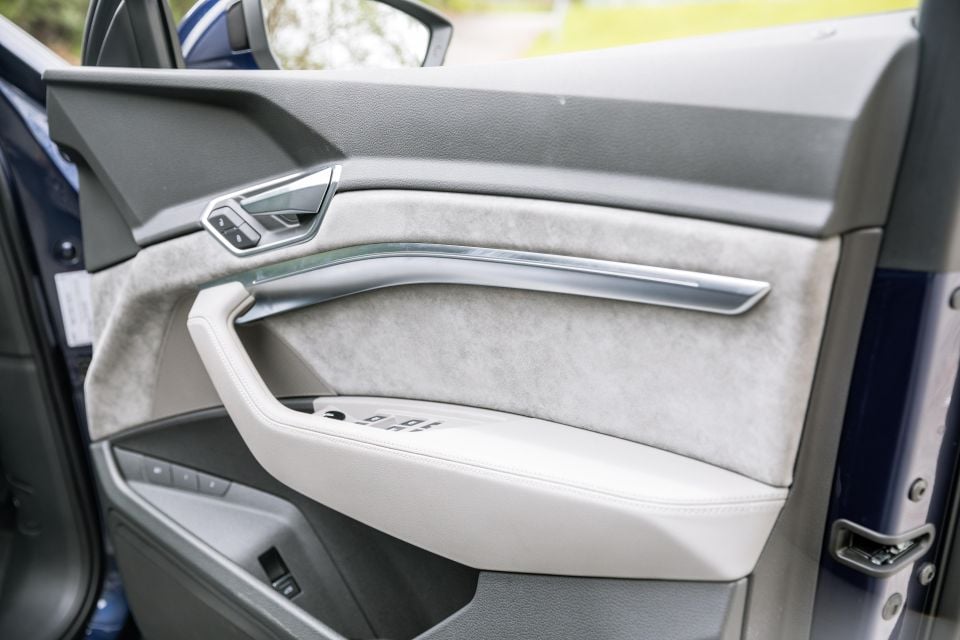
That might seem like a long list but there are still some features missing.
The Premium Plus package, priced at $6700, adds Matrix LED headlights, rear privacy glass, electric steering column adjustment, four-zone climate control, colour-adjustable ambient lighting and a 16-speaker Bang & Olufsen 705W sound system. It also includes Audi’s trick virtual exterior mirrors, which are more aerodynamic and transmit footage into the cabin. Mirrors aside, most of these features should frankly be standard on a crossover this expensive.
The omission of ventilated seats, even as an option, is also disappointing though you can get a panoramic sunroof as a standalone option. And while the standard 10-speaker, 180W sound system is adequate, it’s almost worth adding the Premium Plus package for the terrific Bang & Olufsen system alone.
One thing you do get as standard that’s quite handy is a six-year subscription to Chargefox, allowing you to use Australia’s largest network of charging stations. Audi also includes an 11kW home charger as standard.
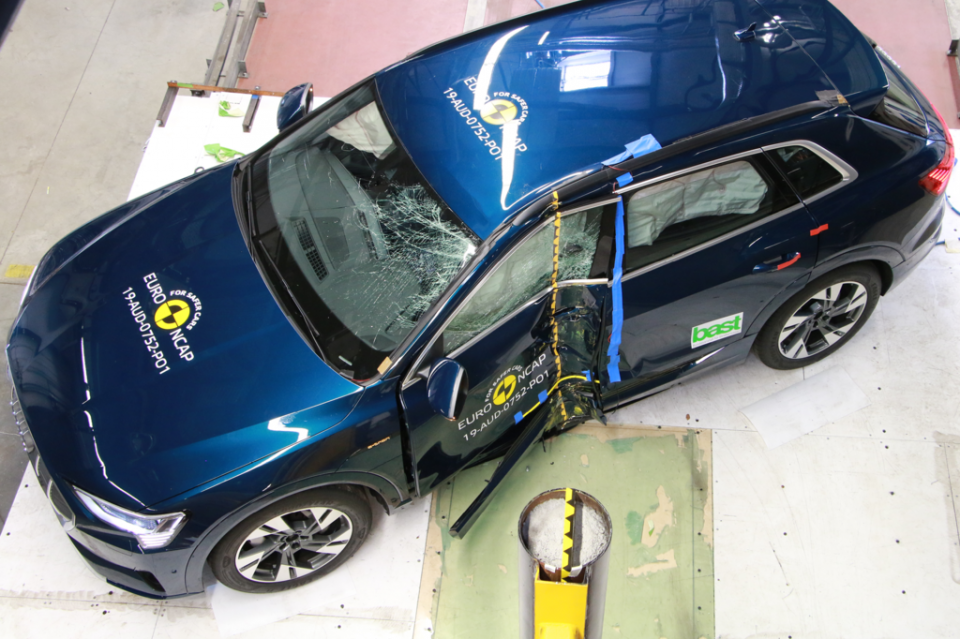
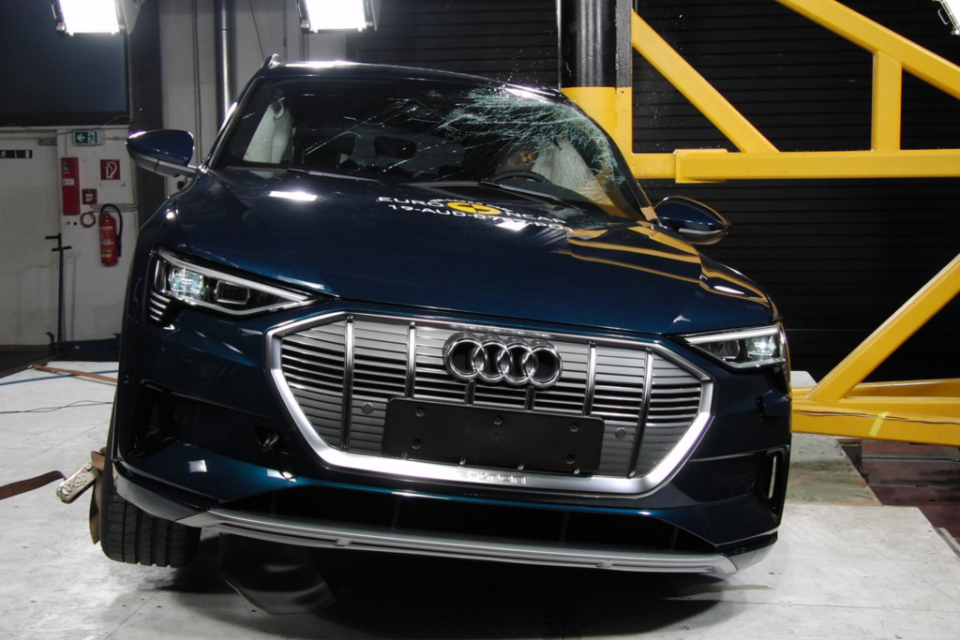
The Audi e-tron was awarded a full five-star ANCAP safety rating in July 2019 based on Euro NCAP testing. It scored 91 per cent for adult occupant protection, 88 per cent for child occupant protection, 71 per cent for pedestrian protection, and 78 per cent for safety assist.
There’s a full suite of driver assist and active safety features, including forward and reverse autonomous emergency braking with pedestrian and cyclist detection, blind-spot monitoring, lane-keeping assist, rear cross-traffic alert and adaptive cruise control with stop/go and traffic jam assist. There are also dual frontal airbags as well as side and curtain airbags for both rows.
Audi’s autonomous emergency braking system, which it calls Pre Sense Front, works at speeds above 10km/h. It can detect pedestrians and cyclists and brake at speeds of up to 85km/h and can detect other vehicles and brake accordingly at speeds of up to 250km/h.
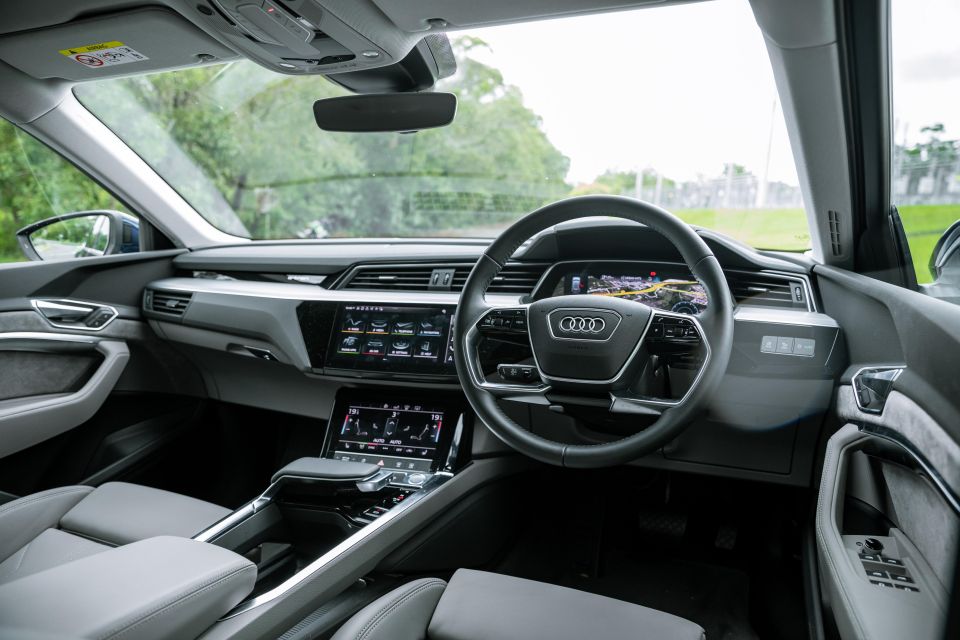
The e-tron has a largely stock-standard, present-day Audi interior that looks virtually lifted out of a Q7. There are only a couple of items that make the e-tron interior’s more distinctive than your garden variety Q7, and both are kind of 1980s futuristic chic – and we mean that in a good way.
There’s the lovely grey suede trim on the doors and the unusual shifter, which resembles a giant lever.
However, most of this protrusion isn’t actually moveable. Instead, it seems to serve as a fairly useless wrist rest, while selecting a gear is handled by a little metallic piece at the end of it which doesn’t feel tactile or substantial at all.
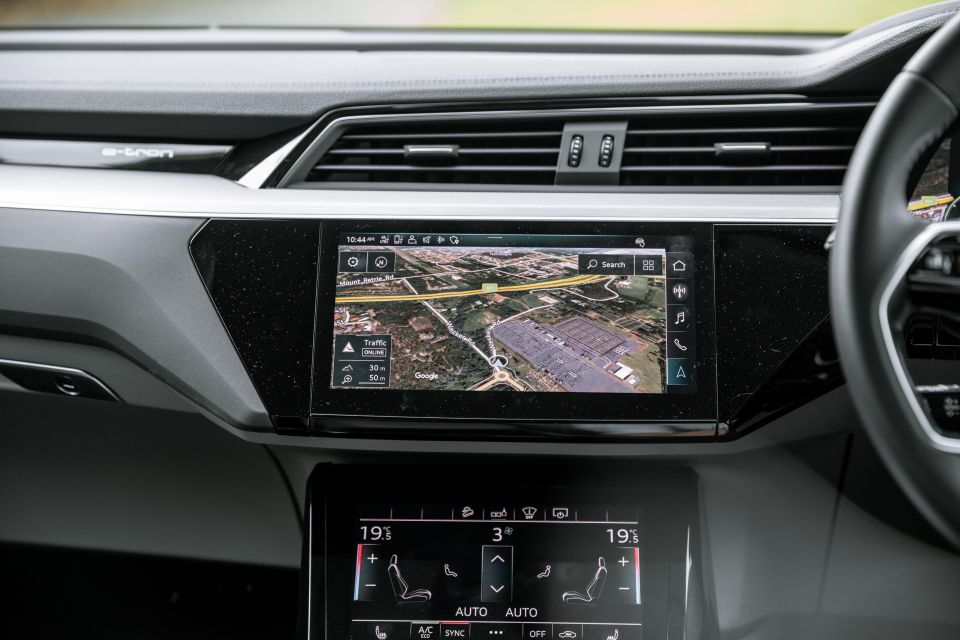
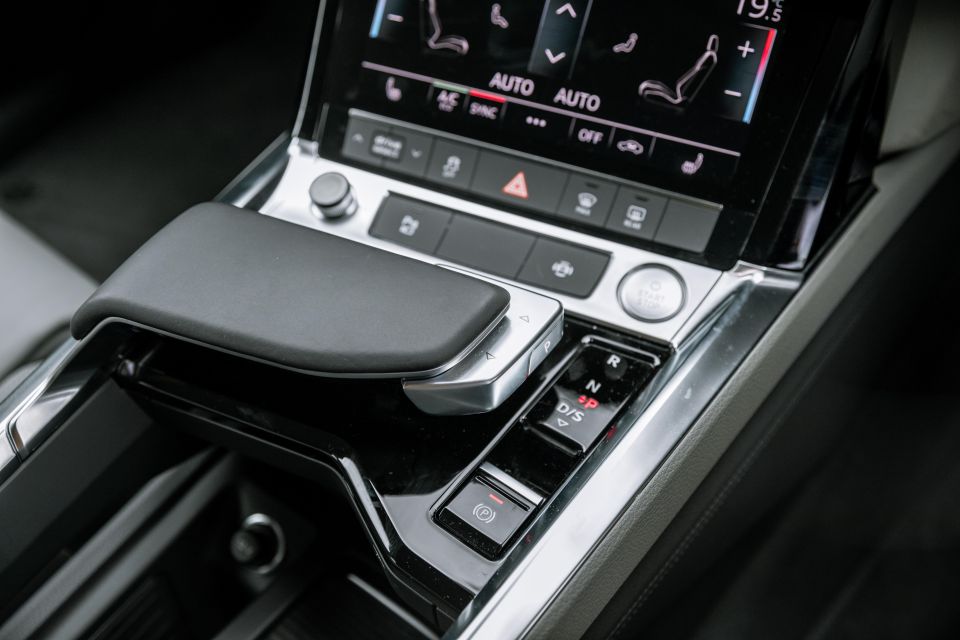
Speaking of tactility, the dual touchscreens have clean, crisp graphics but just don’t feel as intuitive to interact with as rival touchscreens. Audi’s added haptic feedback to them, addressing a common criticism of touchscreens.
Unfortunately, in Audi’s case, that means you have to press down on on-screen buttons as if they were physical buttons, making for a strange compromise between a regular touch interface and good old-fashioned buttons.
There’s a button on the steering wheel that allows you to do voice commands but its efficacy is patchy at best. If even Apple and Google devices can sometimes struggle to comprehend you, there’s little hope for automakers. Even speaking slowly and clearly and with as little accent as possible, there were occasions when the Audi’s infotainment system simply didn’t understand me.
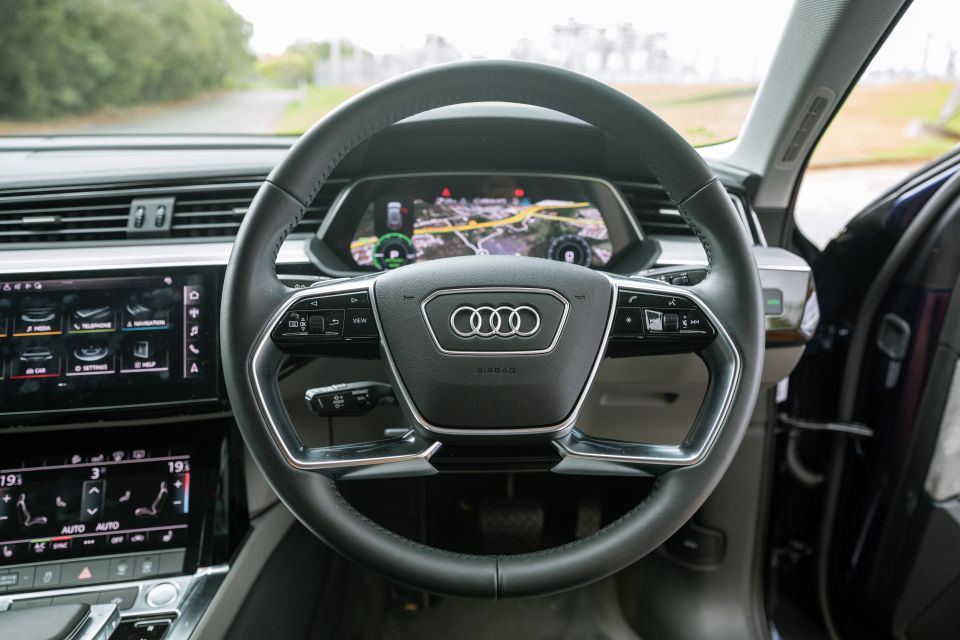
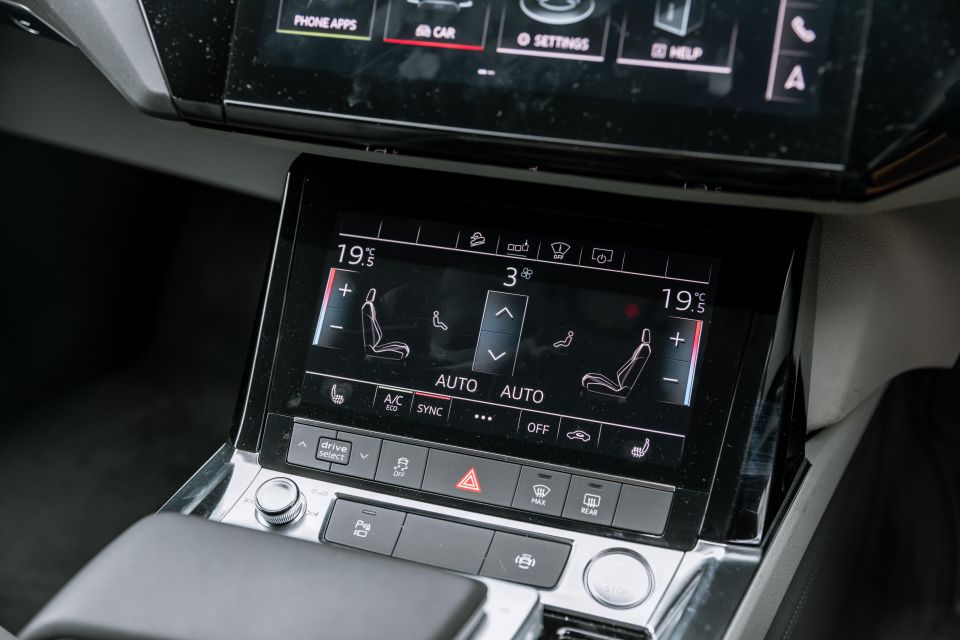
If you use Apple CarPlay or Android Auto, there’s no haptic feedback. That means you can interact with the touchscreen like you would any other touchscreen.
Unfortunately, I had great difficulty connecting to Android Auto. I may have inadvertently cancelled a prompt which doomed me to never be able to use it, as friends were able to successfully connect. It seems the Audi simply didn’t like either my device or my provider. I was eventually able to finally get it working again… on my last day with the car.
Audi’s use of a second touchscreen for climate controls is puzzling. Sure, it looks nice and, after all, Tesla owners manage all those functions via their single, large touchscreen. Nevertheless, I feel this is a case of technology for the sake of technology. Buttons and knobs are easier to handle on the move and are less likely to be marred by smudges.
Fortunately, all three digital displays in the e-tron boast impressive clarity. The two screens on the centre stack don’t look mismatched, while the digital instrument cluster display looks impressive, particularly when you switch it to map mode and toggle to satellite imagery. It’s easy to read but it also has a visual wow factor.
Interior presentation is nice overall, even if it doesn’t look particularly different from other Audi products. There are more surfaces covered in leather than in some less expensive Audis, including the dash top and the sides of the centre console.
If we want to get really persnickety, there’s a piece of plastic at the rear of the centre console that looks and feels cheap, creaking when you apply pressure to it, while Audi’s parts bin drive mode selector is uninspiring.
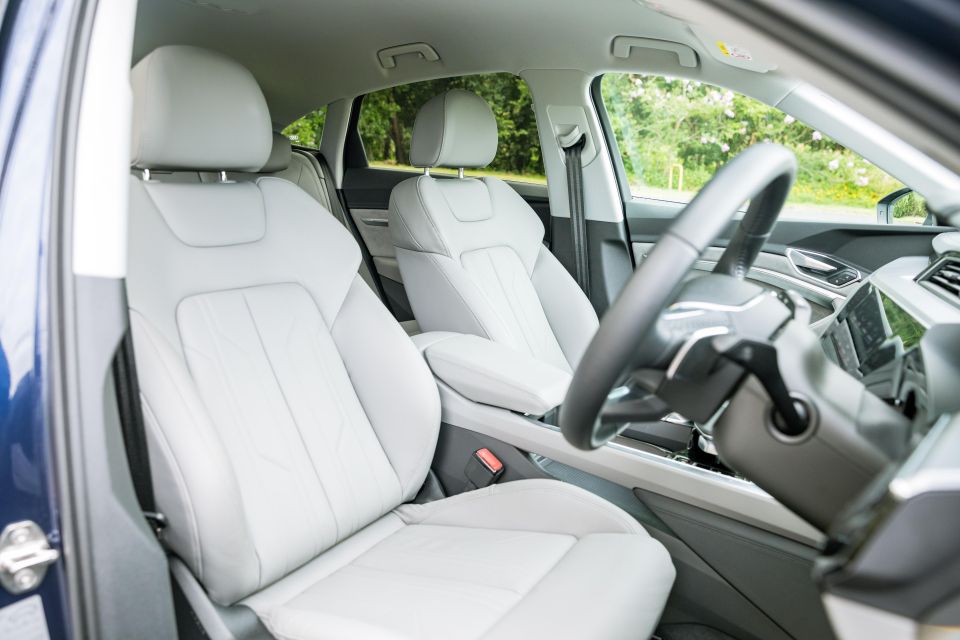
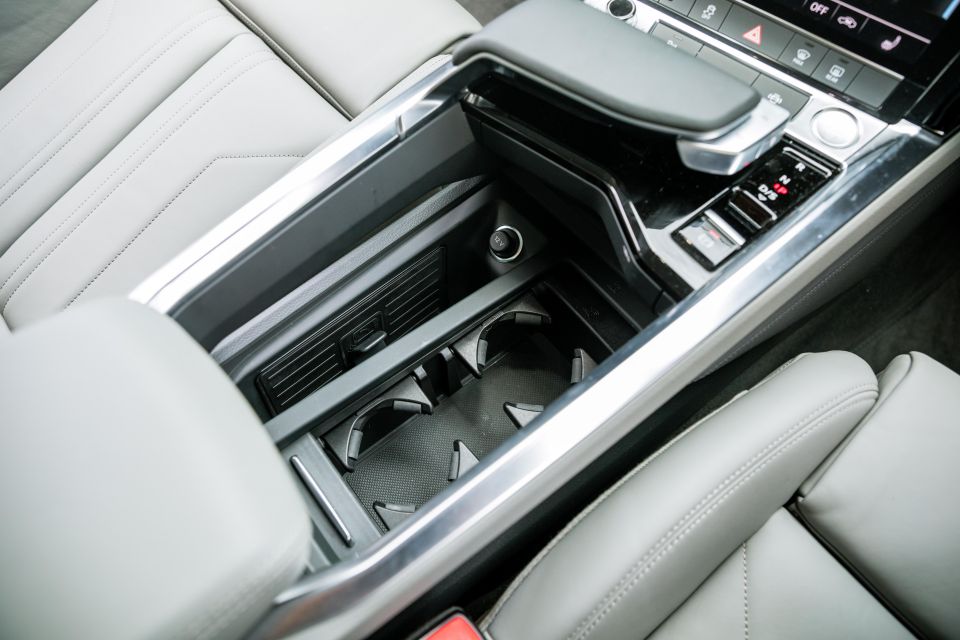
What’s more noticeable and disappointing about the e-tron cabin are the seats. They feel hard and slabby and just simply aren’t as sumptuous as you would expect from a luxury SUV at this price point, with one passenger commenting the rear bench was too flat.
Unlike some Volkswagen Group products, the cupholders in the e-tron are decently sized and there’s also well-sized bottle holders in the doors.
The centre console resembles a large pit, with the cupholders and phone charger/holder quite low. The “pit” can’t be completely concealed, though there is a sliding cover for the cupholders within.
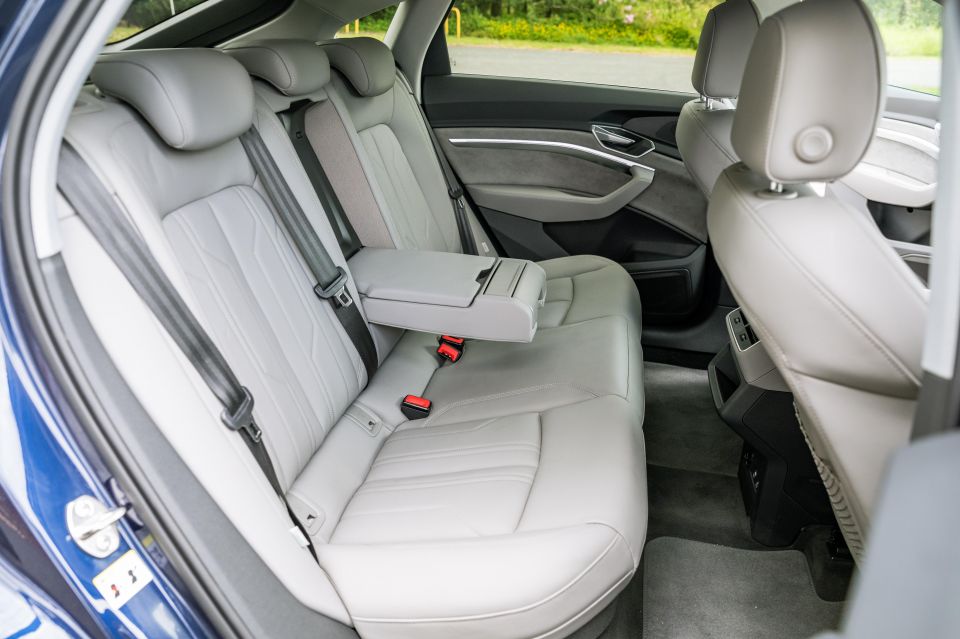
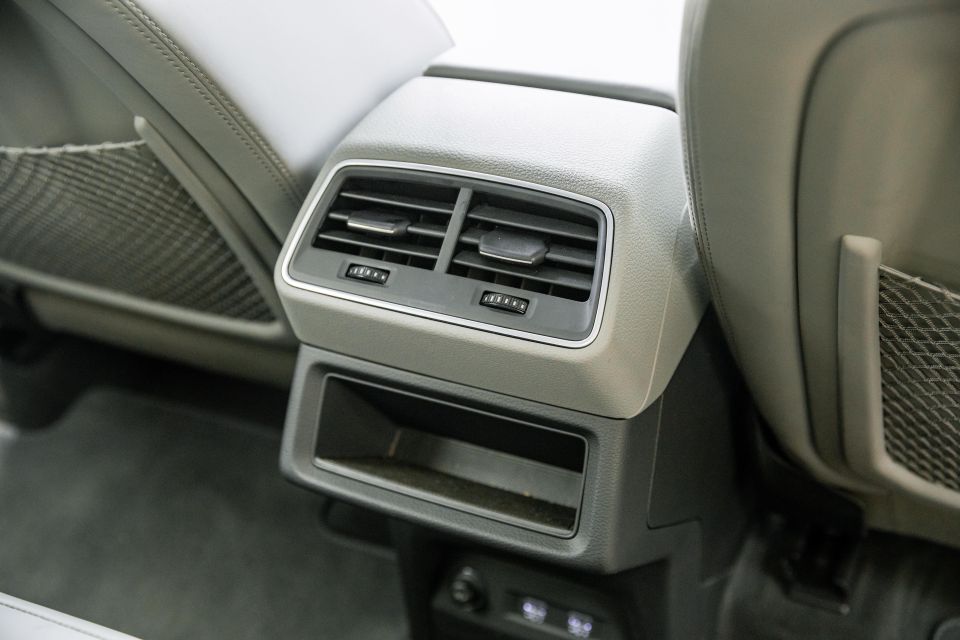
Though the Sportback has a more steeply raked roofline than the regular e-tron, there’s still plenty of headroom in the rear plus ample legroom.
Unfortunately, while there’s a flat floor, the rear of the centre console juts into the centre rear passenger’s space.
There are rear air vents, a 12V outlet and a couple of USB-A outlets, though there are no temperature controls unless you opt for the Premium Plus package. Child seats can be secured via one of the three top-tether or two ISOFIX anchor points.
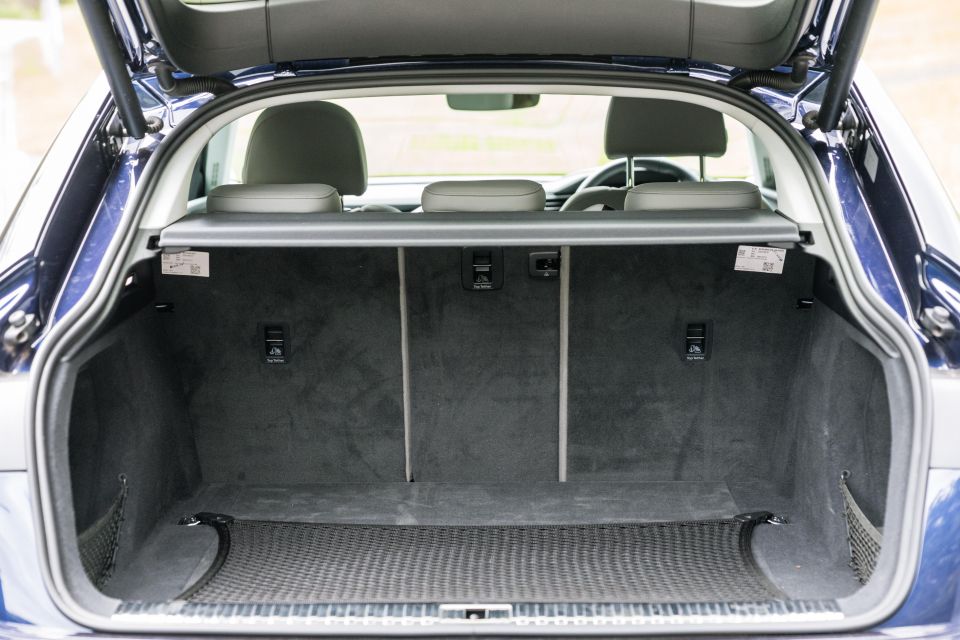
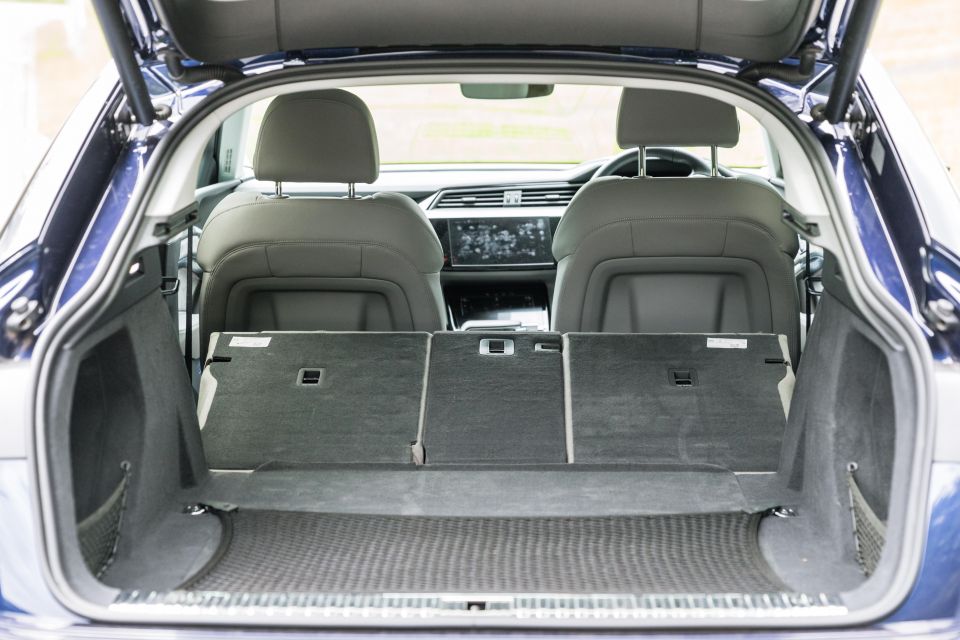
The sleek roofline might lower the height of the cargo area but this is still a pretty spacious boot, with 615L of luggage space with the rear seats in place compared to 660L for the wagon. There’s also 60L in a front boot.
Finally, there were a couple of clever interior features. As on other Audis, the e-tron reminded me to take my mobile phone when I got out.
The e-tron also boasts illuminated seat belt buckles, which is both practical and visually impressive.
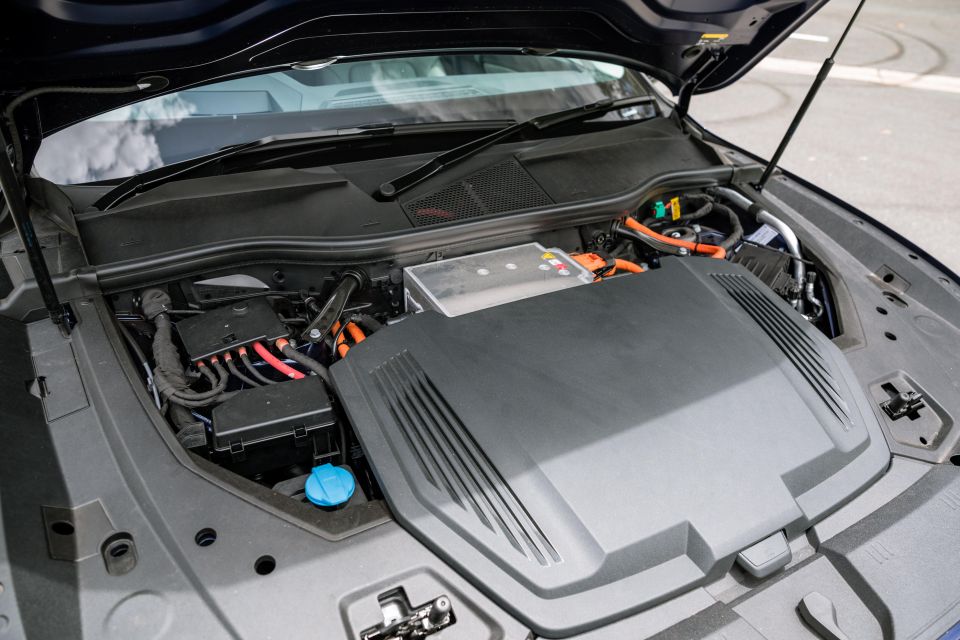
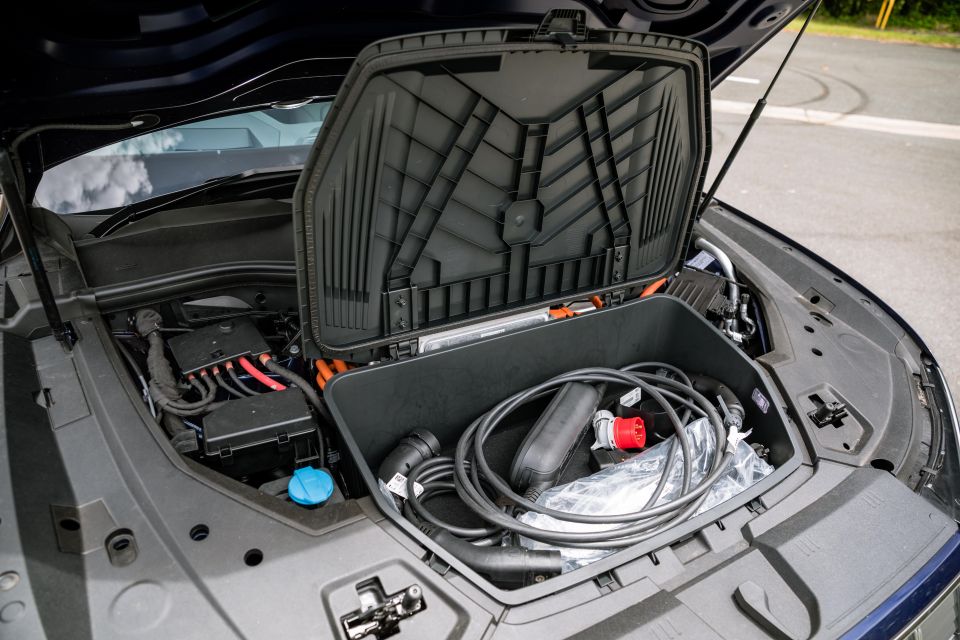
Technically, under the bonnet there’s what looks like an engine cover. Lift it and there’s a pretty titchy space to store charging cables. On both front fenders you’ll find charging ports.
The e-tron 55 features dual-motor all-wheel drive and a 95kWh lithium-ion battery pack, larger than the base 50’s 71kWh pack.
That affords it 300kW of power and 664Nm of torque in boost mode, up 70kW and 114Nm over the base model.
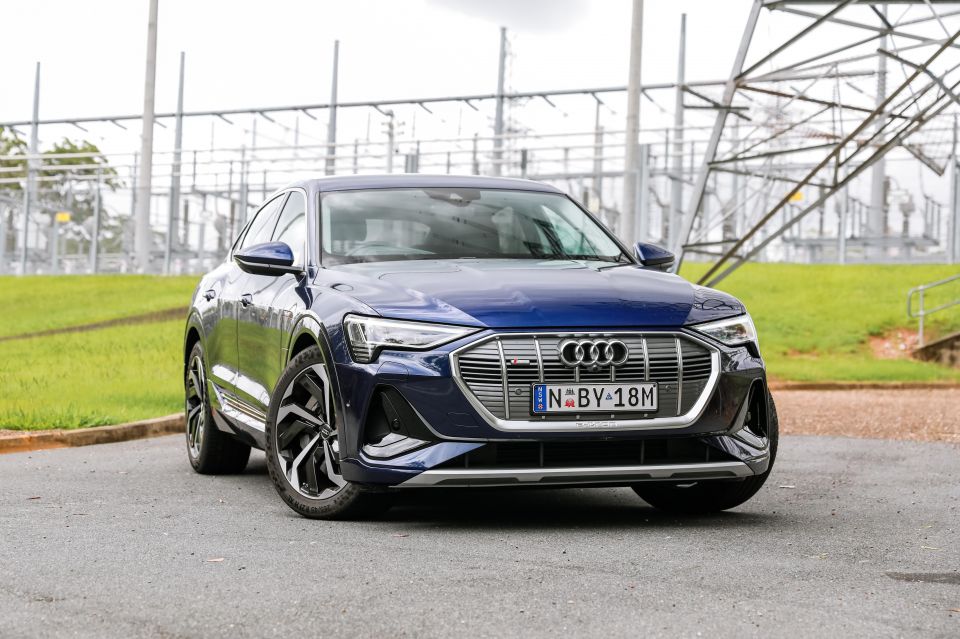
Where expert car reviews meet expert car buying – CarExpert gives you trusted advice, personalised service and real savings on your next new car.
The e-tron is quick enough and has the instant torque that all-electric vehicles have, however its acceleration doesn’t feel quite as interstellar as you might expect if you’ve spent a lot of time in Teslas.
It’s quick, sure, but it doesn’t quite pin you back in your seat. Audi claims a 0-100km/h time of 6.6 seconds or 5.7 seconds in boost mode, the latter being 0.2 seconds quicker than the turbo petrol V6-powered 55 TFSI version of the updated Audi Q7 range. But that’s still 1.8 seconds slower to 100km/h than a Model X Long Range, while the Model X Plaid is quicker still.
To offset the large 21-inch alloy wheels, the e-tron boasts adaptive air suspension which furnishes a comfortable and well-damped ride. While it’s a touch firm, it dispatches bumps and ruts without any impact to the cabin. Only on really pockmarked roads does the e-tron start to feel a little fidgety.
Though it’s a big SUV, you can throw it into corners and it’ll stay impressively flat with little body roll. The steering isn’t the most tactile though it has an acceptable amount of weight. But despite the e-tron’s low centre of gravity and instant torque, hustling this 2740kg (tare) SUV down a winding road isn’t thrilling.
Nevertheless, the e-tron holds its own, especially in Dynamic mode where the air suspension lowers slightly.
Around town and on the highway is where the e-tron shines. The cabin is impressively hushed, even at highway speeds where an internal combustion engine would usually drown out a lot of the road and wind noise in a car.
There’s an off-road mode available in the Drive Select screen. We wouldn’t venture far off-road in one of these, though, as even the owner’s manual explicitly says it’s not an off-road vehicle.
You can use the paddle shifters to adjust the regenerative braking setting, provided you’ve first changed the recuperation setting to manual within the infotainment system. It isn’t clearly labelled within the instrument cluster, however, what level of regenerative braking you’ve selected and the recuperation effect isn’t as pronounced as in some EVs.
There’s also an automatic regeneration mode that uses GPS data to determine when the vehicle is approaching an intersection or area where a complete stop is required.
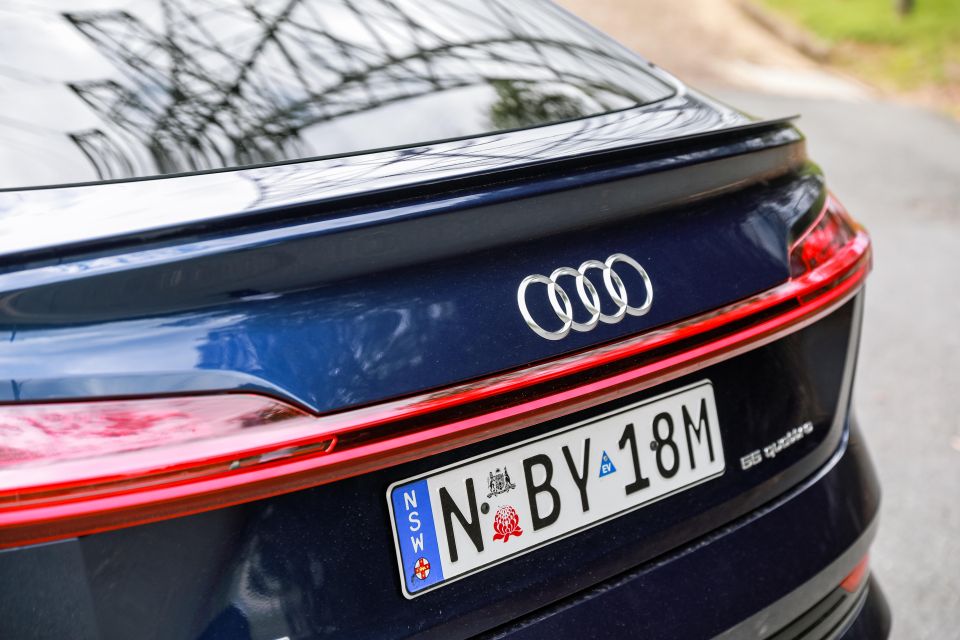
In terms of efficiency, we averaged 20kWh/100km on a test loop that included low-speed city, suburban and highway driving.
Claimed range is 436km on the stricter WLTP standard, or 100km more than the 50 quattro. That equates to energy usage of between 22.4kWh and 26.6kWh per 100km.
You can charge it at up to 150kW using public DC chargers and up to 11kW using three-phase AC power. If you’re using a DC ultra-rapid charger, you can only use the passenger-side charger and it’ll take 30 minutes to charge from zero to 80 per cent, or 45 minutes to fully charge the battery.
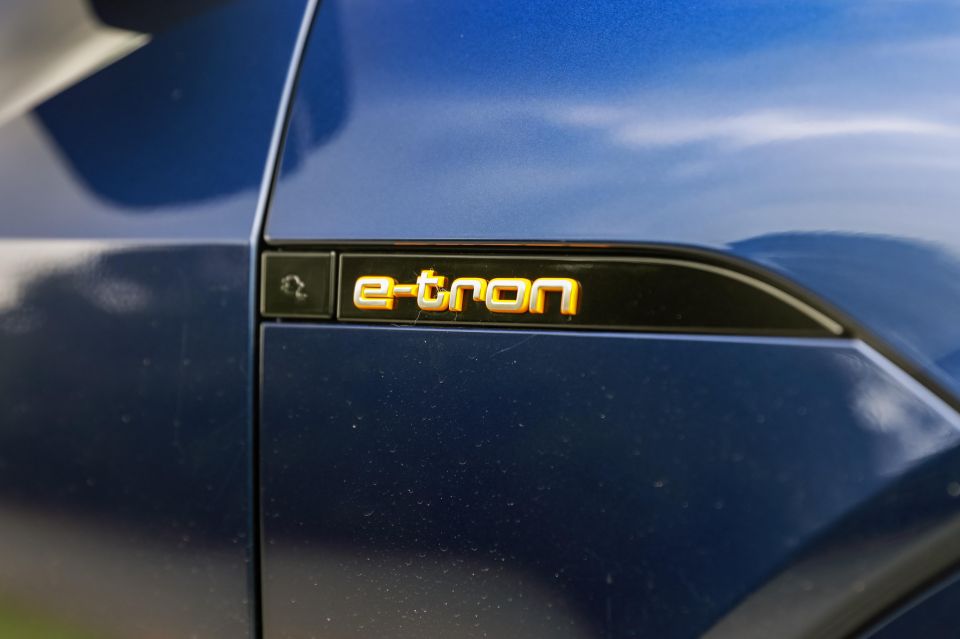
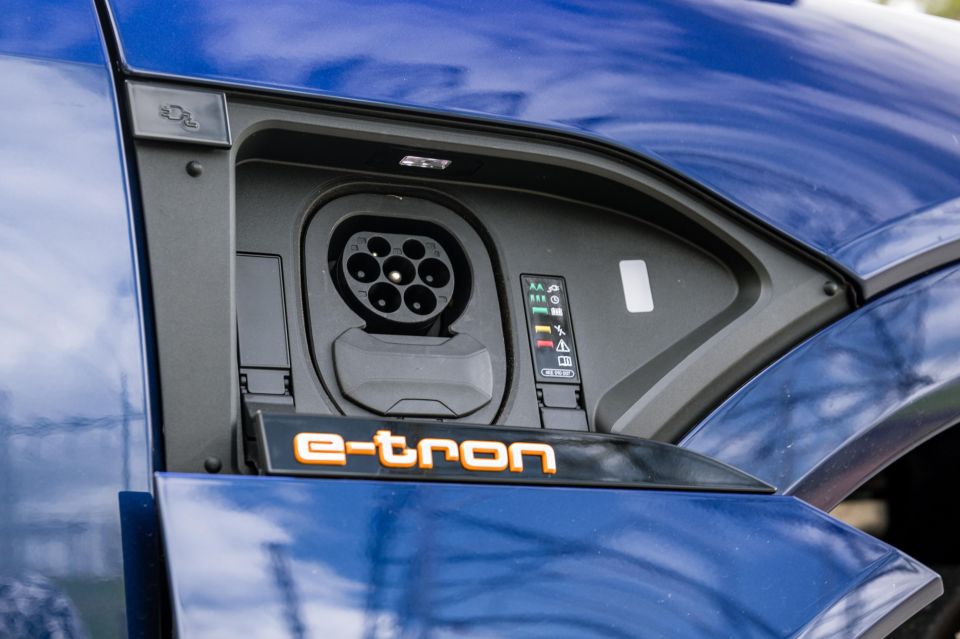
Its range is almost identical to an EQC though it’s down somewhat on the I-Pace, which has 470km and takes the same amount of time to charge at home using an 11kW charger and three-phase power.
Although the battery is backed by an eight-year, 160,000km warranty, the rest of the car is backed by a three-year, unlimited-kilometre warranty.
Audi sweetens the pot with six years of free public charging through the Chargefox network, six years and 90,000km of free scheduled servicing (whichever comes first), and six years of roadside assistance.
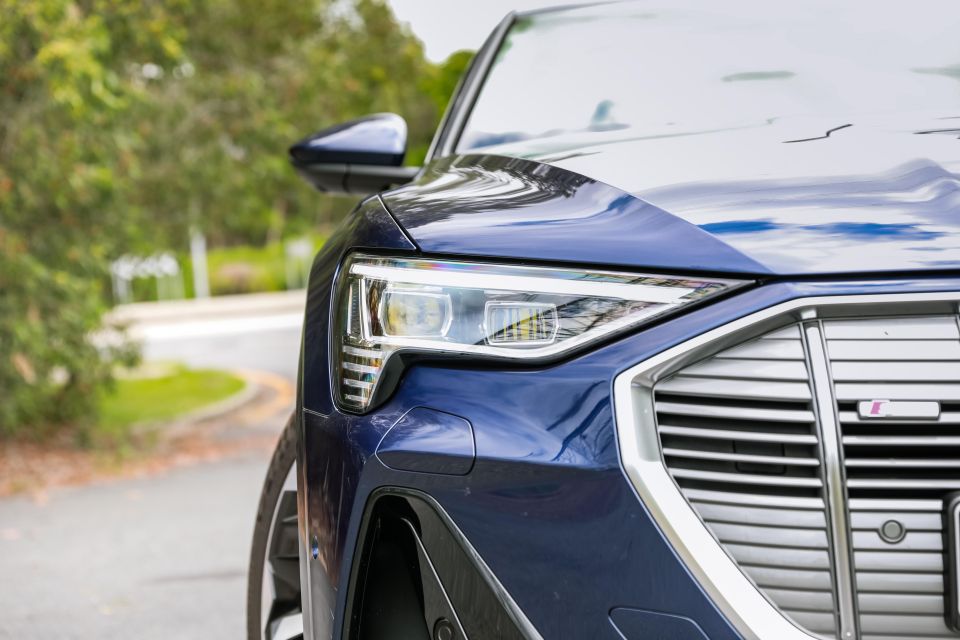
Buy your new car without the stress. It's fast, simple and completely free.

Great service from Travis and team, second time I have used this business would not hesitate to recommend them to anyone
Craig C.
Purchased a Ford Ranger in Sunshine Coast, QLD
CarExpert helped Craig save $7,224 on his Ford Ranger, now let us save you on your next new car.
Get your BEST priceCost aside – and we hope the electric premium decreases as Audi ramps up production of EVs – it’s hard to fault the e-tron.
It’s spacious, sufficiently powerful, and comfortable to drive. The interior is standard Audi fare and the styling is chunky and purposeful. In all, this is a broadly competent luxury SUV.
This segment might be a very low-volume one in Australia, but that doesn’t mean there aren’t a raft of alternatives.
A Tesla Model X is more powerful, while its in-car technology is arguably more impressive. That third row of seating also makes it decidedly more practical.
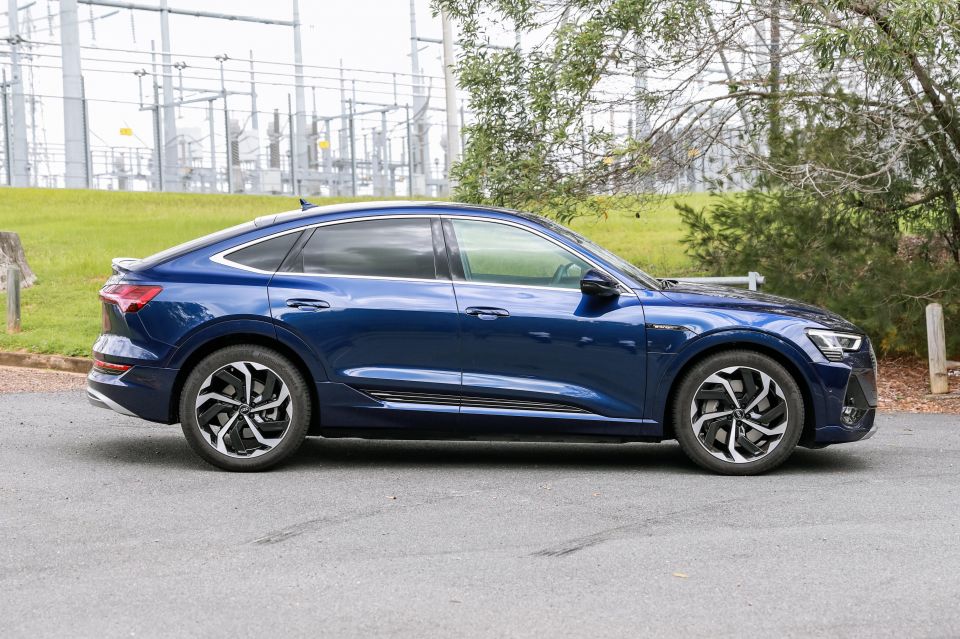
A Mercedes-Benz EQC is cheaper, though due to Mercedes’ fixed pricing its retail price is the floor and the e-tron’s is the ceiling, while the Jaguar I-Pace is cheaper, faster, has superior range, and is more visually arresting.
We’re also disappointed that some features you’d expect to see on a car at this price point are either options or not available.
In all, the e-tron feels like the ideal electric vehicle for your well-to-do grandparent. It has the cachet of the Audi badge, while there’s nothing intimidating or unfamiliar about the integration of its electric drivetrain and it’s wrapped in familiar styling inside and out.
That the e-tron will feel so familiar to Audi owners in its technology and styling will be reassuring. We can’t help but think, though, that the e-tron has done little to stand out in a fledgling but growing segment.
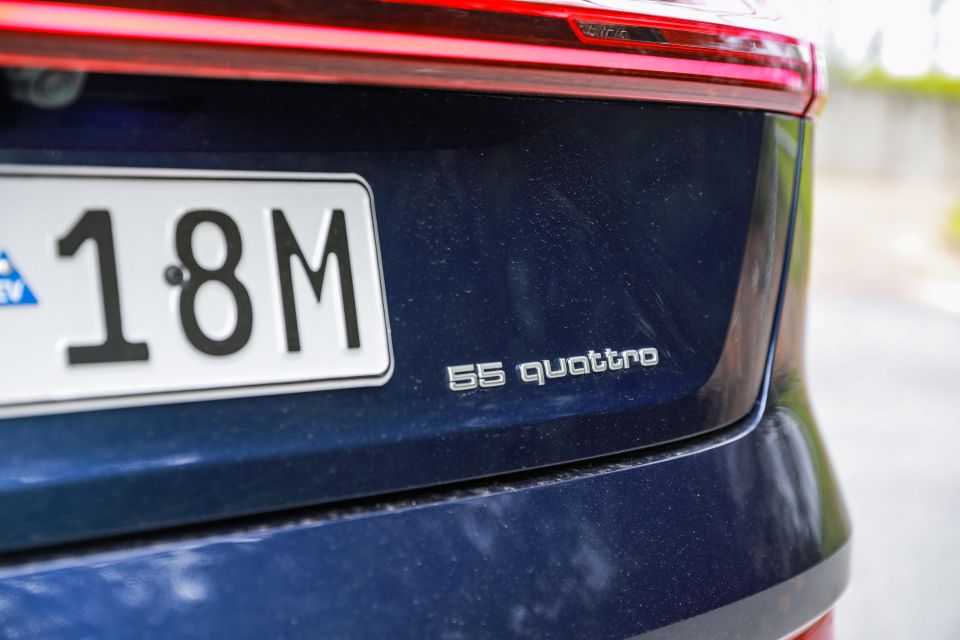
Click the images for the full gallery
MORE: Audi e-tron news, reviews, comparisons and videos MORE: Everything Audi
Where expert car reviews meet expert car buying – CarExpert gives you trusted advice, personalised service and real savings on your next new car.
William Stopford is an automotive journalist with a passion for mainstream markets and historical automotive pieces.


William Stopford
3 Hours Ago


Ben Zachariah
5 Hours Ago
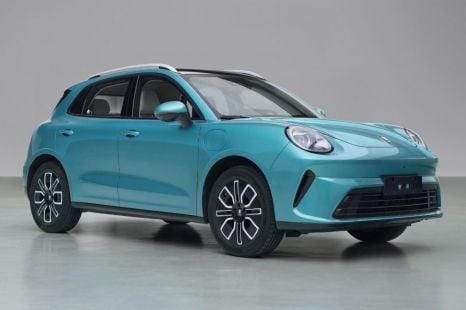

William Stopford
5 Hours Ago
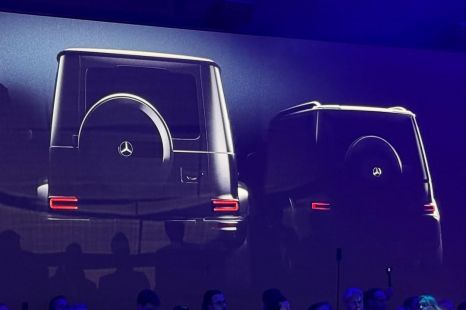

Ben Zachariah
8 Hours Ago
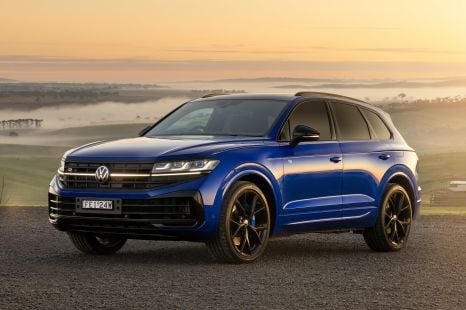

Damion Smy
8 Hours Ago
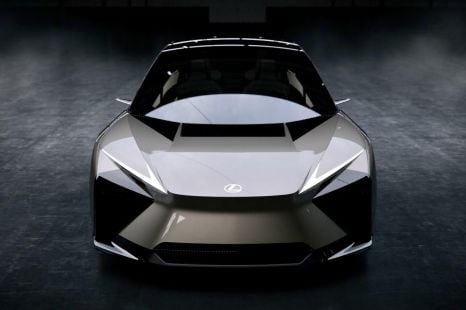

Ben Zachariah
8 Hours Ago